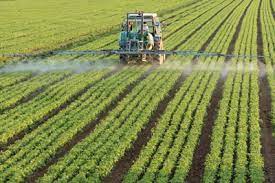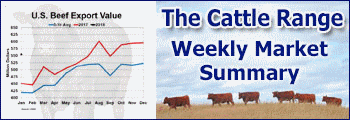KEY POINTS:
- The war in Ukraine has left the world not only short of important grains but also fertilizers. This could tighten food supplies.
- Farmers are seeing prices for fertilizers skyrocket. Some may choose to rotate crops or use less nutrients, which could reduce crop yields.
- “All of this is a double whammy, if not a triple whammy,” said a commodities strategist. “We have geopolitical risk, higher input costs and basically shortages.”
A fertilizer shortage has added to growing concerns about the Ukraine war’s impact on the price and scarcity of certain basic foods.
Combined, Russia and Belarus had provided about 40% of the world’s exports of potash, according to Morgan Stanley. Russia’s exports were hit by sanctions. Further, in February, a major Belarus producer declared force majeure — a statement that it wouldn’t be able to uphold its contracts due to forces beyond its control.
Russia also exported 11% of the world’s urea, and 48% of the ammonium nitrate. Russia and Ukraine together export 28% of fertilizers made from nitrogen and phosphorous, as well as potassium, according to Morgan Stanley.
Disruptions of those shipments due to sanctions and war has sent fertilizer prices skyrocketing. High grain prices are rising even more.
The global shortage of fertilizer is a huge problem, says CF Industries Holdings CEO
“It is a huge problem,” said CF Industries CEO Tony Will in a recent CNBC appearance. He said global fertilizer supplies are very tight. CF manufactures and distributes fertilizers.
“It’s a confluence of factors, unprecedented demand coupled with a huge fall off in supply availability, only just exacerbated by the war in Ukraine and what’s going on with exports coming out of Russia and Ukraine,” Will added.
A contributor to higher costs and shortages
“All of this is a double whammy, if not a triple whammy,” said Bart Melek, global head of commodity strategy at TD Securities. “We have geopolitical risk, higher input costs and basically shortages.”
“Agriculture is absolutely going to get hit. In the case of Canada, it’s good for Saskatchewan, which is the largest producer of potash in the world, but farmers are going to get hurt because per acre they’re going to pay a lot more,” Melek said. “They’re going to get lower yield simply because they’re economizing, particularly in emerging markets.”
Grain shortages will drive up the cost of basic foods and other commodities. “That’s going to lead to higher input costs for producing everything from grains, wheat and corn. The input costs are higher now because you’re going to have scarcity that bids the price up as well,” Melek said. Meanwhile, prices for cows, steers and pork bellies have also climbed significantly, he added.
We’re not just concerned about food prices but also availability, says Ospraie’s Anderson
Some fertilizers have more than doubled in price. For instance, Melek said potash traded in Vancouver was priced at about $210 per metric tons at the beginning of 2021, and it’s now valued at $565. He added that urea for delivery to the Middle East was trading at $268 per metric ton on the Chicago Board of Trade in early 2021 and was valued at $887.50 on Tuesday.
Will said CF Industries is running its plants around the clock, foregoing some maintenance and trying to expedite shipments to areas in need. “There are no new tons to make. It’s just a matter of trying to get them there as quickly as we can into the marketplace,” he said.
Just as the price of fertilizers has jumped, the price of agricultural commodities has also been soaring, amid fears of shortages.
“We are absolutely facing a problem of catastrophic proportion here,” said Will. “Not only is the issue lack of availability and affordability of nutrients and inputs, but Russia and Ukraine have historically exported about 30% of the global wheat trade and 20% of global corn trade.” He added that there are stocks of those commodities that are not getting out to the market because the Black Sea is closed.
Rising prices for wheat, corn and soy
Wheat futures for July were down slightly Wednesday. They rose about 4% Tuesday on worries about Ukraine but also on worse-than-expected U.S. crop conditions. Corn futures prices are up nearly 30% year-to-date and inched downward Wednesday on the Chicago Board of Trade. Soybean futures were also slightly lower.
Morgan Stanley expects grain prices to remain above last year’s levels until 2023.
“Before the Ukraine war, the dry weather in [Latin America] took inventories to levels that would already keep grain prices high,” wrote the Morgan Stanley analysts in a report.
“The war adds uncertainties related to Ukrainian corn/wheat supply, and, more important to fertilizer use and global yields,” they said. “Due to this, our base crop price scenario implies a 2-3% reduction of yields in higher-cost regions, with risks of larger disruptions depending on fertilizer availability and weather.”
The Morgan Stanley analysts said they expect higher prices in 2022 and 2023, but after that they expect inventories should normalize with more supply from Latin America. They also anticipate prices will align closer with production costs and drop 15% to 20% below longer-term soy and corn contracts.
Melek said corn rose 57% in 2021, and it could be volatile this year, averaging up 25% higher on the year. Live cattle prices rose 19% last year and could gain another 15% in 2022. Wheat was up 27% in 2021 and could tack on another 22% this year, he said.
Melek said the high prices are being driven by tight supplies and shortages.
“We’re talking about an erosion of food security on a scale we have not seen for a long time, and I think it will touch people in the lower income distribution in North America,” he added. Melek said farmers are likely to consider rotating in less fertilizer-intensive corps and will economize on the amount of nutrients they use.
“Consumers are going to make choices too,” he said.
Fertilizer production relies on natural gas, and that has made a difference to U.S. producers. The biggest buyers of the top three types of fertilizers are Brazil, India, the U.S. and China, according to Morgan Stanley.
“Being a North American producer is huge for us. We pay somewhere in the neighborhood of $5 to $6 per million British thermal unit [MMBtu] of natural gas,” CF’s Will said. “Europe pays $35 to $38 per MMBtu…That is a huge spread between low cost production, and it’s one of the reasons why fertilizer price is what it is. It’s not only a lack of availability, but the high-cost producers are very high cost.”
For some farmers, the high-priced or unavailable fertilizer will mean crops may not get as much nourishment this year. In turn, yields could be lower.
“In close contact with a number of our customers in Latin America, we’re going to begin exporting on a humanitarian basis just to get nutrients down there to a region that is a rich growing area but also starved for nutrients right now,” said CF’s Will.














